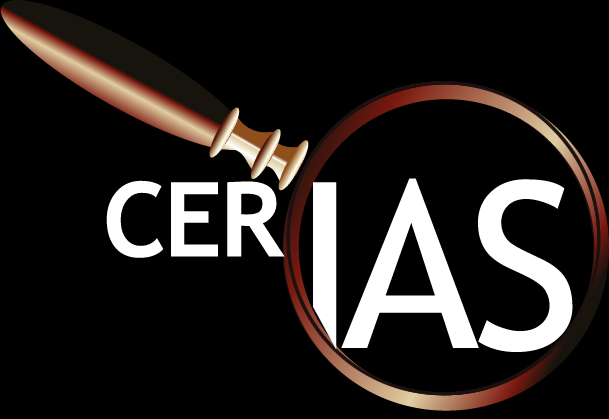Frequently Asked Questions - End System Security
Questions:
- Biometric Information Lifecycle Framework
- Secure Group Communication Over wired/wireless networks
- Precise Calling Context Encoding
- Convicting Exploitable Software Vulnerabilities: Practical Input Provenance Based Approach
- Virtualization-Enabled Malware Research
- Cryptanalysis of RSA
- The Poly^2 Project
- Transparency & Legal Compliance in Information Systems
- Assurable Configuration of Security Policies in Enterprise Networks
- Access Control Policy Specification and Verification
- Techniques to Retrofit Legacy Code
- Finding Flaws in Unmodified Distributed Systems
- Classifying Java Class Transformations for Pervasive Virtualized Access
- Malware Reverse Engineering, Code Analysis, & Development
- Collaborative Attacks in WiMAX
- Defending against Collaborative Packet Drop Attacks on MANET
- Invisible Watermarking Based on Creation and Robust Insertion-Extraction of Image Adaptive Watermark
- Secure and Efficient Access to Outsourced Data
- A Computational Model for High-assurance Dynamic Information Systems
- Information Theory of Data Structures
- Unified Open Source Transactional Infrastructure
- Certified Garbage Collection for Highly Responsive Systems
- Architectural Support for Fault Management
- A Holistic Approach to Reliable Pervasive Systems
- New Product Design Risk Assessment
- High-Throughput Real-Time Stream Processing in Java
- Towards Trustworthy Peer-to-Peer Overlay Networks
- Parametric Compiler Optimization for Multi-core Architectures
- Scalable Concurrent Compacting Garbage Collection for Commodity Multi-core Processors
- CSR/AES: Fault Determination and Recovery in Cycle-Sharing Infrastructures
- A High Assurance, High Capacity Platform for Information Operations
- A Framework for Managing the Assured Information Sharing Lifecycle
- Fault Determination and Recovery in Cycle-sharing Infrastructures
- A Testbed for Compiler-supported Scalable Error Monitoring and Diagnosis for Reliable and Secure Sen
- Fault Determination and Recovery in Cycle-Sharing Infrastructures
- Systematic Control and Management of Data Integrity, Quality and Provenance for Command and Control
- Development of a Safe, Virtual Imaging Instrument for Logically Destructive Experiments (ReAssure)
- Resource-Efficient Monitoring, Diagnosis, and Programming Support for Reliable Networked Embedded Sy
- Testing and Benchmarking Methodologies for Future Networking Security Mechanisms
- Smart RF Antennas for Reliable and Real-Time Sensor Networks
- H-Media - the Holistic-Multistream Environment for Distributed Immersive Applications
- Controlled Declassification with Software Transactional Memory
- NBD: an Abstraction Driven Approach to Characterizing and Designing Network
- Encore/J: Transparently Recoverable Java for Resilient Distributed Computing
- Security Services For Healthcare Applications
- Compiler-Enabled Adaptive Security Monitoring on Networked Embedded Systems
- Robust Sensor Network Architecture through Neighborhood Monitoring and Isolation
- Towards Virtual Distributed Environments
- Systematic Control and Management of Data Integrity, Quality and Provenance for Command and Control
- System Support for Detection, Identification, and Tracking Tasks in Sensor-Cyber Networks
- A Multi-site Study of How Medical Surgical Medical Nurses Spend Their Time: a Baseline
- Design and Development of a Data Management System for Uncertain Data
Q:
Biometric Information Lifecycle Framework
A:
Q:
Secure Group Communication Over wired/wireless networks
A:
Q:
Precise Calling Context Encoding
A:
Q:
Convicting Exploitable Software Vulnerabilities: Practical Input Provenance Based Approach
A:
Q:
Virtualization-Enabled Malware Research
A:
Q:
Cryptanalysis of RSA
A:
Q:
The Poly^2 Project
A:
Q:
Transparency & Legal Compliance in Information Systems
A:
Q:
Assurable Configuration of Security Policies in Enterprise Networks
A:
Q:
Access Control Policy Specification and Verification
A:
Q:
Techniques to Retrofit Legacy Code
A:
Q:
Finding Flaws in Unmodified Distributed Systems
A:
Q:
Classifying Java Class Transformations for Pervasive Virtualized Access
A:
Q:
Malware Reverse Engineering, Code Analysis, & Development
A:
Q:
Collaborative Attacks in WiMAX
A:
Q:
Defending against Collaborative Packet Drop Attacks on MANET
A:
Q:
Invisible Watermarking Based on Creation and Robust Insertion-Extraction of Image Adaptive Watermark
A:
Q:
Secure and Efficient Access to Outsourced Data
A:
Q:
A Computational Model for High-assurance Dynamic Information Systems
A:
Q:
Information Theory of Data Structures
A:
Q:
Unified Open Source Transactional Infrastructure
A:
Q:
Certified Garbage Collection for Highly Responsive Systems
A:
Q:
Architectural Support for Fault Management
A:
Q:
A Holistic Approach to Reliable Pervasive Systems
A:
Q:
New Product Design Risk Assessment
A:
Q:
High-Throughput Real-Time Stream Processing in Java
A:
Q:
Towards Trustworthy Peer-to-Peer Overlay Networks
A:
Q:
Parametric Compiler Optimization for Multi-core Architectures
A:
Q:
Scalable Concurrent Compacting Garbage Collection for Commodity Multi-core Processors
A:
Q:
CSR/AES: Fault Determination and Recovery in Cycle-Sharing Infrastructures
A:
Q:
A High Assurance, High Capacity Platform for Information Operations
A:
Q:
A Framework for Managing the Assured Information Sharing Lifecycle
A:
Q:
Fault Determination and Recovery in Cycle-sharing Infrastructures
A:
Q:
A Testbed for Compiler-supported Scalable Error Monitoring and Diagnosis for Reliable and Secure Sen
A:
Q:
Fault Determination and Recovery in Cycle-Sharing Infrastructures
A:
Q:
Systematic Control and Management of Data Integrity, Quality and Provenance for Command and Control
A:
Q:
Development of a Safe, Virtual Imaging Instrument for Logically Destructive Experiments (ReAssure)
A:
Q:
Resource-Efficient Monitoring, Diagnosis, and Programming Support for Reliable Networked Embedded Sy
A:
Q:
Testing and Benchmarking Methodologies for Future Networking Security Mechanisms
A:
Q:
Smart RF Antennas for Reliable and Real-Time Sensor Networks
A:
Q:
H-Media - the Holistic-Multistream Environment for Distributed Immersive Applications
A:
Q:
Controlled Declassification with Software Transactional Memory
A:
Q:
NBD: an Abstraction Driven Approach to Characterizing and Designing Network
A:
Q:
Encore/J: Transparently Recoverable Java for Resilient Distributed Computing
A:
Q:
Security Services For Healthcare Applications
A:
Q:
Compiler-Enabled Adaptive Security Monitoring on Networked Embedded Systems
A:
Q:
Robust Sensor Network Architecture through Neighborhood Monitoring and Isolation
A:
Q:
Towards Virtual Distributed Environments
A:
Q:
Systematic Control and Management of Data Integrity, Quality and Provenance for Command and Control
A:
Q:
System Support for Detection, Identification, and Tracking Tasks in Sensor-Cyber Networks
A:
Q:
A Multi-site Study of How Medical Surgical Medical Nurses Spend Their Time: a Baseline
A:
Q:
Design and Development of a Data Management System for Uncertain Data
A:



